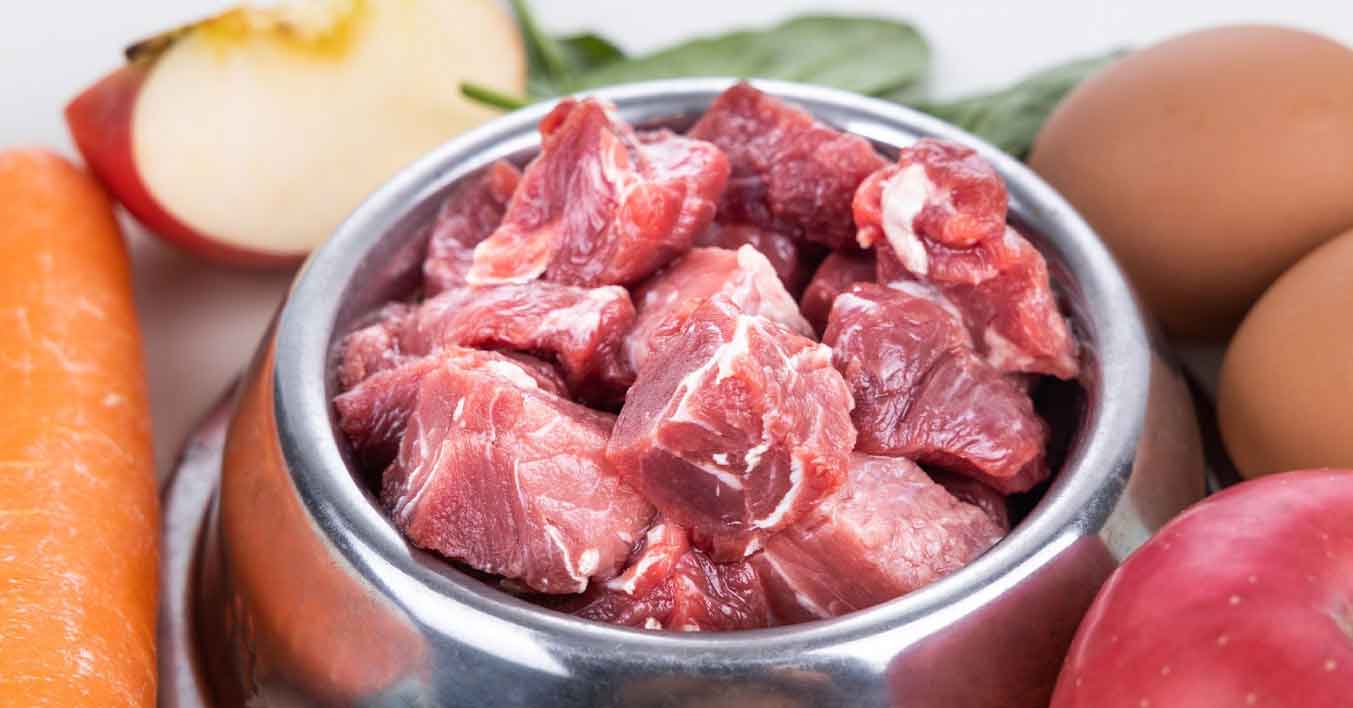The BARF diet stands for "Biologically Appropriate Raw Food" and "Bones and Raw Food." It was founded by veterinarian and nutritionist Dr. Ian Billinghurst who proposed a diet that mimics the evolutionary diet of wild carnivores for dogs.
A BARF diet consists of raw meat and bones, vegetables, fruits, and other natural supplements. This diet is also popular among pet owners, as it is believed to have many health benefits. However, it is important to note that the BARF diet should be supervised by a veterinarian, as not all animals can handle a raw diet. Additionally, BARF should be supplemented with other sources of nutrition to ensure the overall health and well-being of the animal.
What does a BARF diet consist of?
This raw diet consists of food that's high in protein, moderate in fat with minimal amounts of carbohydrates, and it usually comprises:
- Muscle meat
- Raw meaty bones
- Organ meat
- Vegetables and fruits
- Supplements
It can be fed fresh or dehydrated, but the amounts will depend on your dog's weight and age. Nonetheless, if you want to start your pet with this diet, you should consult first with your veterinarian.
Benefits of feeding your dog the BARF diet
Feeding your dog the BARF diet can provide many benefits for your pet's joint and bone health, immunity, skin health and coat shine, dental health, fresher breath, leaner, more muscular build, less body odor, vibrant, calm energy, and stool volume and odor.
There are also environmental benefits since feeding raw food to your dog lowers our ecological footprint. The BARF diet includes animal parts that humans usually don't eat, so we reduce waste by giving them to our pets.
According to the American Kennel Club, advocates of raw food diets cite these benefits: shinier coats, healthier skin, improved dental health, higher energy levels, and smaller stools. However, there are also potential risks, such as the potential for allergic reactions, nutritional deficiencies, and the possibility of bacteria and parasites associated with raw food. Ultimately, you should schedule a veterinary consultation to help decide if the BARF diet is right for your dog.

How to start your dog on a raw diet
Feeding your dog raw food is an excellent way to provide them with a nutritious and healthy diet. Raw food provides your dog with protein and fat, which are essential to a balanced diet. As with any diet, monitoring your dog's body weight when transitioning to raw food is important. It takes more effort than just throwing down a bowl of kibble, but it's worth it for the health benefits. Plus, you should research your dog's dietary needs to ensure the right balance of vitamins and minerals.
One key element is to start gradually and transition slowly. Experts ensure that the complete transition can be accomplished within a week, but, as with any dietary change, the ideal is to go slow. The older the dog, the longer you should take to transition to the new raw diet.
Is BARF only meant for dogs?
Cats are obligate carnivores, which means that they require nutrients that are only found in meat. A BARF option for cats should include what they would eat in the wild to provide the necessary nutrition for a healthy life.
Some benefits, according to the Feline Nutrition Foundation, are:
- Better digestion
- Less stool odor and volume
- Healthier coats
- Increased energy
- Improved urinary health
- Better weight control
- Improved dental health
In fact, the lack of heat-processing raw meat offers better quality and higher protein levels and nutrients for cats.
If you are considering giving your pet a raw diet, such as BARF, please contact one of the registered vets available at Kounsel. They offer online vet consultations to help you understand the best way to start.





